
ما زرتشتیان یادگار یکی از کهنترین و زیربناییترین فرهنگهای بشری هستیم، اشوزرتشت نزدیک به 4000 سال پیش برای نخستین بار آفریدگار هستی را به یکتایی فراخواند و ستایش کرد. پیامبری که اساس پیامآوری خود را بر اخلاق نهاد و بشریت را به سوی اهداف والا راهنمایی کرد و زندگی خود را وقف آموزش انسانها کرد تا راه دستیابی به این اهداف والای زندگی را فرا بگیرند.
هدفگذاری، تعیین نقشه راه و تلاش همیشگی نیاکانمان برای دستیابی به اهداف والای بشری بیانگر این واقعیت است که زرتشتیان همواره از یک هوش استراتژیک تاریخی بهرهمندند و همین امر هم باعث شده است تا سختترین دورههای تاریخی را پشت سرگذارند و تا به امروز باقی بمانند.
اما در سدههای اخیر شاهد تغییر و تحولات گستردهای در جوامع بشری بودیم که مهمترین آن بعد از مدرنیسم، پدیده جدیدی به نام جهانی شدن است. در این روند جدید اگر جامعه زرتشتی نتواند خود را با شرایط جدید وفق داده و بروز کند شاید بقای جامعه زرتشتی در خطر باشد.
در نگاه اول جهانیشدن روندی است که با افزایش ارتباطات و از بین رفتن مرزها، جوامع کوچک را به سرعت حذف میکند. اما در تئوریهای جدید ارائه شده، جهانیشدن الزاما یک نظام همگن نیست و بیشتر به دنبال شناسایی باورها و ارزشهایی است که جامعه جهانی بتواند به آنها تکیه کند. در این صورت اتفاقا نظام جهانیشدن با گذر از مرزهای جغرافیایی و هویتهای ملی، حول فرهنگهای پایهای و ریشهداری شکل میگیرد که ملتها ارزشهای خود را زا آنها گرفتهاند.
بدون شک فرهنگ زرتشتی یکی از فرهنگهای ریشهدار و شناختهشده است و این مسوولیت ما را به عنوان زرتشتی سنگینتر میکند. ما باید بمانیم و فرهنگ زرتشتی را پاسداری کنیم نه فقط برای خودمان بلکه برای آینده بشریت. ما زرتشتیان باید اعتمادسازی را از بنیان خانواده و آموزش فرزندان آغاز کنیم و یک جامعه متحد بسازیم که تک تک اعضای آن احساس وابستگی عمیقی نسبت به آن داشته باشند از سوی دیگر با ایجاد اعتماد بیرونی راه پیشرفت و بقای خود را در هموار سازیم.
برای این کار ما احتیاج به یک برنامهریزی استراتژیک مدون برای جامعه زرتشتی داریم. تدوین، اجرا و ارزیابی سه مرحله مدیریت استراتژی هستند، پس علاوه بر تدوین باید جهت اجرا و ارزیابی آن نیز پیشبینی کرد. به همین دلیل تدوین برنامه استراتژی یک کار تیمی است و باید از افرادی بهره برد که در اجرا و مدیریت آن نیز نقش داشته باشند.
با دانستن این موضوع، من در این سخنرانی فقط قصد دارم با ارائه یک طرح اولیه، امکان و نیاز انجام چنین برنامهریزی را نشان دهم به امید روزی که ، به همت بزرگان و افراد بادانش و تاثیر گذار جامعه زرتشتی این کار به نتیجه برسد.
مهمتر از برنامهریزی استراتژیک، داشتن تفکر استراتژیک است. تفکر استراتژیک، فرایند فکری است که در راستای دستیابی به هدف یا اهدافی از پیش تعیین شده شکل میگیرد. اگر گاتها را بررسی کنیم به این باور میرسیم که اشوزرتشت از یک تفکر والای استراتژیک بهرهمند بوده است در نخستین گام اهدافی والا و واقعی را در گاتها تعریف کرده است و تمام تلاشش را در دستیابی به این اهداف و از همه مهمتر آموزش انسانها در راه دستیابی به این اهداف انجام داده است.
اشوزرتشت در گاهان یک چشمانداز متعالی مشخص و تمام اهداف و آموزشهای خود را متمرکز به آن کرده بود که همین امر باعث به وجود آمدن یک ارتباط ریشهای بین تمام اهداف شده بود. مهمتر اینکه با دیدی بسیار فراتر از درک و زمان خود گام بر میداشت و همین امر باعث ایجاد یک انگیزه قوی در بین پیروانش شده بود. انگیزهای که تا هزاران سال پس از او دوام داشته است.
اشوزرتشت از یک تدبیر و تفکر بلند مدت بهره میبرد براین اساس چشماندازی آرمانی را به جهانیان معرفی کرد تا بتوانند اهداف کوتاهمدت و بلندمدت خود را در مسیر دستیابی به آن چشمانداز هدایت کنند. اشوزرتشت اگرچه خود را پیامبر معرفی کرد اما همواره خود را در جایگاه مردم در نظر گرفته و حتی از سوشیانتها، یا انسانهایی نام میبرد که با درک آموزشهای اهورایی به جایگاه او دستیافته و راهش را ادامه میدهند.
تمام این نکات ویژگیهای برتر یک تفکر استراتژیک است و از آنجایی که جامعه زرتشتی برپایه این اندیشهها شکل گرفته است طبیعی است که در راه تدوین برنامه استراتژی برای آن، باید بر شناخت اندیشهها و راهکارهای پیامبر تکیه کنیم. قبل از آن مواردی را که باید در تدوین یک برنامه استراتژی شناسایی و تعریف شوند معرفی میکنیم که عبارتند از:
چشمانداز (Vision): چشماندازی، افق دید یا نهایت آنچیزی است که میخواهیم در آینده به دست آوریم است و یک چشمانداز خوب باید الهامبخش و باعث حرکت و انگیزه در جامعه باشد.
ماموریت (Mission) : ماموریت با تمرکز بر آنچه که باید انجام دهیم و آنچه که نباید انجام دهیم، راهکارهای عملی برای دستیافتن به چشمانداز ارائه میدهد.
ارزشهای بنیادی (Core Values) : ارزشهای اخلاقی، باورها و رفتارهایی است که پشتوانه دستیافتن به چشمانداز است و یک چشمانداز عالی به وسیله ارزشهای اخلاقی متعالی هدایت میشود و این ارزشها هستند که به استراتژی اعتبار و ارزش میدهند.
استراتژی (Strategy) : استراتژی راهها و روشهایی است که برای دستیافتن به اهداف در نظر میگیریم و چشمانداز، ماموریت و ارزشهای بنیادی نقش اساسی در انتخاب و برنامهریزی استراتژی جامعه دارند.
اهداف و مقاصد (Goals and Objectives) : اهداف، تصمیمها و فعالیتهای ما را تعریف میکنند و اگر بتوان برای آنها زمان و نتیجه قابل اندازهگیری تعریف کرد نقش موثری در دستیافتن به اهداف دارد.
فلسفه به پیامبری رسیدن اشوزرتشت
سوشیانس یا نجاتبخش: هات 29 گاتها با گله روان آفرینش به درگاه اهورامزدا به دلیل گسترش خشم و خشونت و تجاوز در جهان آغاز میشود. یکی از زیباترین سرودهای گاتهاست. در ادامه اهورامزدا در پاسخ به درخواست روان آفرینش پس از رایزنی با اشا (نماد راستی) و بهمن (نماد اندیشه نیک) اشوزرتشت را که آموزشهای مزدا را درک کرده به پیامبری برمیگزیند و از اشا و بهمن میخواهد تا او و یارانش را یاری دهند تا بتوانند جهانی پر از صلح و آرامش بسازند.
به روشنی فلسفه به پیامبری رسیدن اشوزرتشت نجات جهان از جهل و خشونت و گسترش صلح و آرامش با یاری اَشا و وهومن بیان شده است.
نخستین آموزگار:
اشوزرتشت خود را نخستین آموزگار مینامد که وظیفه دارد با آموزشهای خود، آگاهی را در جهان بگستراند و جهانیان را بیاموزد که با تکیه بر اندیشه پاک و راستی در مسیر کمال گام بردارند. اگر چه اشوزرتشت بنا به یکی از بندهای پایانی گاتها راضی است از اینکه ماموریتش را به نیکی به پایان برده و تمام کسانی که دشمن او بودهاند امروز یا همراه او هستند اما در راه دست یافتن به چشماندازش او آغازگر این راه بود.
ماموریت اشوزرتشت : اشوزرتشت با درک آموزشهای اهورامزدا، به پیامبری برگزیده شد. شاید برای یک عارف رسیدن به کمال پایان راه باشد ولی برای یک پیامبر این آغاز راه است. او ماموریت دارد تا انسانها را جدا از هر قومیت و باوری به راه راست راهنمایی کند و تنها ابزار او آموزش است. آموزش بر مبنای آگاهی است و هیچ اجبار یا شریعتی ندارد. و این راه سختی است به همین دلیل اشوزرتشت آرزو میکند سوشیانسهایی را که پس از او بیایند و این راه را تا رسیدن به آگاهی تمام انسانها ادامه دهند.
مانتره: مهمترین ویژگی گاتها یا سرودهای اشوزرتشت، تفکر استراتژیکی است که در همه بندهای گاتها به چشم میخورد. همانطور که اشاره شد لازمه یک تفکر استراتژیک یک چشمانداز باارزش است که تمام ماموریتها و اهداف دیگر را در مسیر دستیابی به آن چشمانداز مشخص میکند.
آنچه مسلم است چشمانداز اشوزرتشت حرکت به سوی کمال است. نه کمال تک تک انسانها بلکه کمال تمام جهانیان که شادی و آرامش جهانیان را فراهم میسازد. پس چشمانداز اشوزرتشت، دست یافتن به شادی و آرامش نه شادی و آرامش تک تک انسانها بلکه شادی و آرامش تمام انسانها نه فقط شادی تمام انسانها بلکه شادی تمام موجودات و جهان هستی یا همان روان آفرینش است.
چشمانداز اشوزرتشت
در یک کلام چشمانداز اشوزرتشت بهشتی است که با تکیه بر اندیشه و راستی به همت و تلاش و همازوری همه میسر خواهد بود و نتیجهاش آرامش روان آفرینش و خوشبختی و شادی تمام انسانها خواهد بود.
زنده ماندن آموزشهای اشوزرتشت
جامعه زرتشتی نمونه زنده یک ملت است که بیش از چندهزار سال پیرو آموزشهای بزرگمردی به نام اشوزرتشت زندگی کردند، تجربه اندوختند، فرهنگ ساختند و در پیشرفت تمدن بشریت تاثیرگذار بودند. اگر دین زرتشتی را به درختی تشبیه کنیم که به درستی ریشههای آن اندیشهها و آموزشهای پیامبر باستانی ایران اشوزرتشت بوده و تنه و شاخههای آن سنتها و آیینهایی که با فلسفههای باارزش خود این آموزهها را کاربردی و اجرایی کردهاند بیشک زندگی و سرسبزی آن چیزی نیست جز جامعه زرتشتی. اگر جامعه زرتشتی وجود نداشت کتاب گاهان اشوزرتشت حداکثر یک فلسفه بود در کنج کتابخانهها. اما نیاکان ما سخت ترین تهاجمها و فشارها را در کانون تاخت و تازهای جهانی تحمل کرده و زرتشتی باقی ماندند، تنها به این دلیل که به آموزشهای پیامبرشان اشوزرتشت باور داشتند، آموزههایی که هنوز که هنوز هست تازه است و میتواند نقش بسیار موثری در نجات و پیشرفت جامعه بشری داشته باشد.
همازوری بستهکشتیان: «همازور بیم همازور هما اشو بیم» یکی از مهمترین آموزههای فرهنگ زرتشتی است که به ما میآموزد برپایه راستیها با هم و با همه نیکان جهان همبسته باشیم. حمایت پارسیان هند از زرتشتیان ایران در دورههای سخت و ارتباط و هماندیشی کانونهای دینی ایران با هند و پنجاب نمونه بارزی از این واقعیت است. یکپارچگی و همبستگی زرتشتیان مهمترین ماموریت جامعه زرتشتی است که میتواند با همافزایی بقای جامعه را تضمین کند.
ماموریت جامعه زرتشتی: همازوری زرتشتیان و پاسداری از دین و فرهنگ زرتشتی
اخلاق نیک: زرتشتیان را با شعار اندیشه نیک، گفتار نیک و کردار نیک میشناسند، به پیروی از آموزههای اشوزرتشت، اخلاق نیک بالاترین جایگاه را در فرهنگ زرتشتی دارد و سرچشمه آن راستی است. راستی در دین زرتشتی تنها راهی است که تلاش و حرکت انسان و جامعه بشری را به مسیر دستیابی به هدف متعالی هدایت میکند.
فرشکرد و پیشرفت پایدار : انسان و جامعه انسانی در حرکت، نو شدن و توسعه است که معنی پیدا میکند و چشمانداز جامعه زرتشتی دست یافتن به بهشتی است که خوشبختی را برای تمام انسانها به همراه دارد. در پیام زرتشت بهشت پاداش عبادت، بندگی نیست که وعده داده شده باشد بلکه بهشت، دستیافتنی و ساختنی است و حرکت برای دستیافتن به آن چشمانداز جامعه زرتشتی است.
چشمانداز : جامعه زرتشتی نیکترین جامعه در حال پیشرفت
ارزشهای بنیادی جامعه زرتشتی:
1. خردگرایی و آزاداندیشی: « ای مردم بهترین سخنان را به گوش هوش بشنوید و با اندیشهای روشن و ژرفبینی آنها را بررسی کنید هر مرد و زن راه نیک و بد را خود برگزینید پیش از فرا رسیدن روز واپسین بپاخیزد و در گسترش راستی بکوشید. » (گاتها اشوزرتشت هات 30- بند 2(
2. راستی جویی و دادگری: « راه در جهان یکی است و آن راستی »
3. پویش و توانگری : « تلاش و فعالیت بر بیکاری و تنبلی برتری دارد پس با وجدان بیدار و کار و کوشش خود، اهورامزدا را ستایش و سپاسداری کنید» (گاتها اشوزرتشت هات 46- بند 17)
4. دگرخواهی و وفای به عهد: «خوشبختی از آن کسی است که خواهان خوشبختی دیگران باشد» (گاتها اشوزرتشت هات 43- بند 1)
5. شادی و کمالگرایی: «ای مزدا کی سپیده دم نیک بختی به در خواهد آمد و مردم جهان به سوی راستی و پاکی روی خواهند آورد؟ نجاتدهندگان بشر با دانش و خرد و آموزشهای موثر خویش مردم را رهبری خواهند کرد . (گاتها اشوزرتشت هات 46- بند 3)
6. نوگرایی و پیشرفت: «بشود که از کسانی شویم که جهان را تازه میگردانند».
7. آشتی و مردمدوستی : هرمزد هروسپ توان که مردم را به نیروی دانایی و گویایی از دیگر آفرینشهای گیتی برتر آفرید دادش مردمدوستی است.
توسعهی پایدار
در گذشته جوامع و کشورها را به سه گروه توسعهیافته، در حال توسعه و جهان سوم تقسیمبندی میکردند اما این چالش وجود داشت که ما اساسا یک جامعه توسعه یافته نداریم چون حتی توسعه یافتهترین کشورها اگر در حال توسعه نباشند از بین خواهند رفت.
براین اساس در تئوریهای جدید جوامع به دو گروه، جوامعی که در حال توسعه هستند و جوامعی که در حال توسعه نیستند طبقهبندی شدند. در این تعریف که اولین بار به وسیله دکتر فرهنگ رجایی استاد دانشگاه تورنتو کانادا ارائه شد، در حال توسعه بودن یعنی تولید همزمان، هماهنگ و همیشگی پارامترهای پیشرو. این پارامترها به طور کلی در سه گروه فرهنگ، اقتصاد و قدرت طبقهبندی میشوند. پس جامعهای در حال توسعه است که بتواند همزمان فرهنگ، سرمایه و توانمندی را در درون خود تولید کند.
اینکه جامعه زرتشتی یک جامعه در حال توسعه نیست مشخص است اما مهم این است که آیا باالقوه زمینههای فرهنگی، اقتصادی و یا حتی قدرت را دارد. در این صورت استراتژیهای تعریف شده باید در راستای تولید همزمان این سه فاکتور در جامعه زرتشتی باشد تا بتوان در مسیر چشمانداز جامعه گام برداشت.
با توجه به زمان اندک این سخنرانی من فقط بخشی از تدوین اهداف یک برنامه استراتژی را ارائه دادم با این باور که تنها راه بقای جامعه زرتشتی است و امیدوارم زمینه لازم برای چنین کارهای ریشهای در جامعه زرتشتی فراهم شود.
در جهان فقط یک راه وجود دارد و آن حقیقت است
در پایان سخنم را با نقل یک متن بسیار ارزشمند از یکی از متون پهلوی به پایان میبرم که بیانگر یکی از ژرفترین دیدگاههای استراتژیک نه برای یک گروه خاص، نه برای یک جامعه، بلکه برای جهان هستی است.
در این متن پهلوی، زندگی انسان را به کالسکهای تشبیه شده است که کالسکه نماد جسم انسان، اسبهایی که کالسکه را میکشند جان یا نیروی زندگی است. راننده این کالسکه کسی نیست جز روان انسان که در حرکت است و وظیفه دارد مسافرش را که فروهر یا ذرهای از ذات پاک خداوندی است اصل خود بازگرداند.
در یسنا، راستی به راه تشبیه شده است و تنها راهی که انسان را مسیر درست برای رسیدن به هدف هدایت میکند. از طرفی راستی سرچشمه تمام نیکیهاست که همان ارزشهایی هستند که اگر برخلاف آنها حرکت کنیم نشان دهنده آن است که از مسیر خارج شدهایم.
نقطه اوج این تمثیل در تشخیص این راه است که دین یا دئنا، نقش چشمان روان را ایفا میکند. واژه دین اولین بار در گاتها، به وسیله زرتشت به کار رفته است و معنی آن وجدان است. وجدان یا چشم درون به انسان کمک میکند که نیکی را از بدی تشخیص دهد و در این تمثیل زیبا راه را به روان نشان میدهد به شرط آنکه بیدار باشد.
به اعتقاد من این تمثیل زیبا یک از کهنترین نمونههای برنامهریزی استراتژی است که تمام پارامترهای یک برنامه استراتژی را دارست و میتواند الهامبخش ما در این مسیر حیاتی باشد.
پیروز و سربلند باشید
The role of strategic management
in the survival of Zoroastrian society
Mobed Pedram Soroushpoor
Zoroastrians are the relics of one of the most ancient and fundamental human cultures. Zoroaster, for the first time nearly 4,000 years ago, called and praised the Creator of the universe as one. A prophet who based his message on morality and guided humanity towards great goals and devoted his life to educating human beings to learn the way to achieve these goals.
Goal setting, road-mapping and continuous efforts to achieve great human goals reflect the fact that our Zoroastrian ancestors have always benefited from a strategic historical intelligence and this has led them to go through the most difficult historical periods and remain to this day.
But in recent centuries we have witnessed extensive changes in human societies, the most important of which after modernism is a new phenomenon called globalization. In this new trend, if the Zoroastrian community can’t adapt to the new conditions and update, the survival of the Zoroastrian community may be in danger.
At first glance, globalization is a process that, can lead to the elimination of small communities by increasing communication and disappearance of borders. But in the new theories proposed, globalization is not necessarily a homogeneous system, and its purpose is to identify the beliefs and values that the international community can rely on. In this case, the system of globalization is formed by crossing geographical borders and national identities, based on rooted cultures from which, nations have taken their values.
Undoubtedly, Zoroastrian culture is one of the deep-rooted and well-known cultures, and this increases our responsibility as Zoroastrians. We must survive and preserve Zoroastrian culture not only for ourselves but also for the future of humanity. We must start building trust from the foundation of the family and educating our children, and build a united society in which each of its members feels deeply responsible. On the other hand, by building external trust, we can pave the way for our progress and survival.
To achieve this goal, we need to develop a strategic plan for the Zoroastrian community. Planning, implementation and evaluation are three stages of strategic management, so in addition to planning, implementation and evaluation must also be anticipated. For this reason, planning a strategy is a team effort and people who have a role in its implementation and management should be used.
Knowing this, in this lecture, I only intend to show the possibility and need for such planning by presenting a primary plan, in the hope that one day, with the efforts of the elders and the influential people of the Zoroastrian community, this will be accomplished.
Zarathustra was the first man with strategic thinking
More important than strategic planning is having strategic thinking. Strategic thinking is defined as a mental or thinking process applied by an individual in the context of achieving a goal or set of goals. By studying the Gathas, we come to believe that Zarathustra had a high strategic thinking. In the first step, he has defined lofty and real goals in the Gathas and has made every effort to achieve these goals and, most importantly, to train human beings to achieve these goals.
In the Gathas, Zarathustra set a transcendent vision and focused all his teachings on it, which created a root connection between all the goals. More importantly, he had an understanding far beyond his time, and this created a strong motivation among his followers. A motivation that lasted for thousands of years after him.
Zarathustra uses a long-term plan and thinking. Therefore, he introduced an ideal vision to the world so that they can guide their short-term and long-term goals towards achieving it. Zarathustra calls himself Saoshyant, and Saoshyant is the position that every human being can reach, and Zarathustra wishes the Saoshyants to follow in his footsteps.
All these points are the top features of a strategic thinking, and since the Zoroastrian society is based on these ideas, it is natural that in order to formulate a strategy plan for it, we must rely on knowing the ideas and strategies of the Prophet. Before that, I will introduce the items that should be identified and defined in the development of a strategic plan, which are:
Vision : A vision is a big picture of “What” we want to achieve in Future.
A good vision statement inspires to create a movement.
Mission : A mission is an action statement to achieve the vision. A mission statement is not required to be inspirational.
Mission provides a clear focus on what we do and what we don’t.
Core values : Values are the beliefs behind your vision and mission. A worthy vision is guided by worthy values. Values give dignity and direction to your mission.
They are the moral compass and expected behaviors during your vision quest.
Strategy : A strategy is a statement of your approach to achieving your goals. Your vision, mission, and values play an important role in developing your strategy.
The strategy can be viewed as how we will use mission to achieve vision.
Goals and Objectives : Goals are conditions to be achieved in the future. They must be defined consistent with your vision, mission, and strategic directions. Goals guide your decisions and actions.
Goals usually do not involve measurable results, and therefore, do not change as often as objectives.
Objectives are focused on critical issues and milestones. They describe the activities and targets to achieve your goals. They identify the dates for completing the activities.
They are measurable in terms of being achieved, or not
The philosophy of becoming a prophet
The Saoshyant or savior of the word : Yasna Ha 29 of the Gatha begins with the complaining of the soul of mother earth asking why anger, repine, plunder, aggression and violence are everywhere. Oh my God There is no protector for me except you. Therefore reveal to me a savior who can save me from this difficulty. Ahura Mazda, in response to her request, after consulting with Asha (symbol of truth) and Bahman (symbol of good thought), selects Zoroaster, who understood the teachings of Mazda as a prophet, and he asks Asha and Bahman to help Zoroaster and his companions so that they can build a world full of peace and tranquility.
Accordingly, the mission of Zarathustra is to save the world from ignorance and violence and to spread peace and tranquility with the help of Asha and Bahman.
The first teacher : Zarathustra calls himself the first teacher who must spread awareness in the world and teach the world to walk on the path of perfection by relying on pure and truthful thought. Although Zoroaster, according to one of the final verses of the Ghats, is satisfied that he has completed his mission for good and that all those who were his enemies before now believe in him, however he only initiated the path to achieve his vision.
Zaratushtra’s mission
Ashu Zartushtra, having understood the teachings of Ahura Mazda, was chosen as a prophet. For a mystic, reaching perfection may be the end of the way, but for a prophet, this is the beginning of the way. He has a mission to guide people of all ethnicities and beliefs to the right path, and his only tool is education. Education is based on awareness and has no compulsions or commands for this reason it’s difficult to guide, which is why Zoroaster longs for the Saoshyants to come after his death and guide the people with their teachings.
Mantra : The most important feature of the Mantra or the hymns of Zoroaster is the strategic thinking that can be seen in all the verses of the Gatha. As mentioned, strategic thinking requires a valuable vision that sets out all the other goals on the way to achieving that vision.
What we are certain about is that the vision of Zoroaster is to move towards perfection. Not the perfection of one human, but the perfection of all human beings, which provides the happiness and peace of the world. Therefore, the vision of Zoroaster is to achieve peace and happiness, not the happiness of a certain group of human beings, but the happiness of all human beings, not only the happiness of all human beings, but also the happiness of all beings and the universe or the soul of mother earth .
Zaratushtra’s vision
The vision of Zarathustra is a paradise that will be possible by relying on thoughts and truthfulness with the efforts and cooperation of all, and the result will be the peace of the universe and the happiness of all human beings.
Survival of the teachings of Zoroaster : Zoroastrian society is a living example of a nation that lived, gained experience, created culture and influenced the development of human civilization for more than several thousand years following the teachings of a great man named Zoroaster. we can compare the Zoroastrian religion to a tree with roots of thoughts and teachings of Zoroaster. the trunk and branches are traditions and rituals that have applied and practiced these teachings. Finally life and greenery is certainly nothing but Zoroastrian society.
If there was no Zoroastrian society, Zoroastrianism was at most a philosophy in libraries. But our ancestors withstood the most severe invasions and pressures and remained Zoroastrians, Just because they believed in the teachings of their prophet, the teachings that still are new and can play a very effective role in the salvation and development of human society.
Zoroastrian solidarity : It is one of the most important teachings of Zoroastrian culture that teaches us to be united with each other and with all the virtues of the world based on truthfulness. The support of the Parsis of India for the Zoroastrians of Iran in difficult times and also the connection and sympathy of the religious centers of Iran with India and Punjab is a clear example of this fact. The solidarity of Zoroastrians is the most important mission of Zoroastrian society that can guarantee the survival of society.
Zoroastrian community mission : Zoroastrian solidarity and protection of Zoroastrian religion and culture
Good ethics : Zoroastrians are known for their motto of good thought, good words and good deeds. Following the teachings of Zoroastrianism, good morals are the most valuable feature in Zoroastrian culture and its source is truthfulness. truthfulness in the Zoroastrian religion is the only way that leads the efforts and movement of human and society to the path of achieving a transcendent goal.
Frashkart and sustainable progress : human and society find meaning in movement, renewal and development. The vision of Zoroastrian society is to achieve a paradise that brings happiness to all human beings. In Zoroastrian message, paradise is not the reward of worship and servitude that has been promised, but paradise is achievable and buildable in life, and moving to achieve it is the vision of Zoroastrian society.
Zoroastrian community vision : Zoroastrian society, the most moral society in progress
Zoroastrian community core values
1) Rationalism and free thinking : Listen to the best words and consider them carefully with an open mind, and then each man and woman must decide and choose the path of good or evil. Before the day of judgement comes, all of you must rise and endeavor to spread the words of Ahura. (Yasna 30 – verse 2)
2) Truth-seeking and justice : There is only one way in the world and that is the truth .
3) Effort, movement and ability : Activity and movement are better than laziness and inactivity. Therefore, worship and thank Mazda with full conscience and good deeds. (Yasna 46 – verse 17)
4) Selflessness and loyalty: Good fortune is for him who makes other happy. (Yasna 43 – verse 11)
5) Happiness and perfectionism :When shall, O Mazda, dawn the days of good luck and people of the world will go towards Asha? When shall the saviors of mankind guide the people with their knowledge, wisdom and effective teachings? (Yasna 46 – verse 17)
6) Modernity and progress : Become one of those who makes the world a better place (to live).
7) Peace and People Friendship :God (Hormozd harvesp-tavan), who created people with knowledge and eloquence to be superior to other creations, believes in philanthropy.
Sustainable development
In the past, societies and countries were divided into three groups: developed, developing, and the Third World. But there was a challenge that we basically do not have a developed society because even the most developed countries will disappear if they are not developing.
In the new theories, societies that are developing and societies that are not developing are classified into two groups. In this definition, which was first proposed by Dr. Farhang Rajaei, a professor at the University of Toronto, Canada, being evolving means the simultaneous, harmonious, and permanent creation of leading parameters. These parameters are generally classified into three groups: culture, economy, and power. So it is a developing society that can simultaneously produce culture, economy and empowerment within itself.
It is clear that Zoroastrian society is not a developing society however what matters is whether it has potential cultural, economic, or even power contexts. In this case, the defined strategies should be in line with the simultaneous creation of these three factors in Zoroastrian society in order to be able to take a step in the direction of society’s perspective.
Given the short time of this lecture, I presented only a part of the formulation of the goals of a strategic plan, believing that this is the only way to survival of the Zoroastrian community, and I hope that the necessary ground will be prepared for such radical work in the Zoroastrian community.
There is only one way in the world and that is the truth
In the end, I will quote a unique narration of a Middle Persian text that expresses one of the deepest strategic views not for a specific group, not for a society, but for all human beings.
In this Pahlavi text, human life is likened to a carriage in which the carriage symbolizes the human body, the horses that drive the carriage are the force of life. The driver of this carriage is none other than the human soul, which is in motion and has the duty to return its passenger, who is “Faravahar” or a particle of the pure nature of God, to its original state.
In Yasna, truth is likened to the way and the only way that guides man to the right path to reach the goal. On the other hand, the truth is the source of all goodness, which are the core values that, if we move against them, indicate that we are out of the way.
The culmination of this allegory is the recognition of the way in which religion or “Daena” plays the role of the soul’s eyes. The word “Daena” was first used by the Zoroastrer in the Gathas and means conscience. Conscience or the inner eye helps man to distinguish good from evil and in this beautiful allegory he shows the way to the soul as long as he is awake.
I believe this beautiful allegory is one of the oldest examples of strategic planning that has all the parameters of a strategic plan and can inspire us in this vital direction.
Be victorious and proud
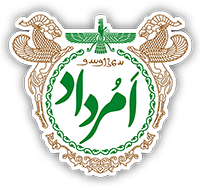

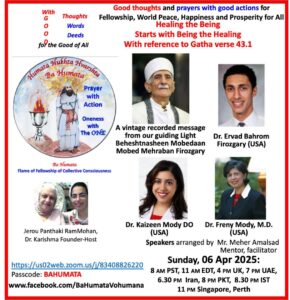
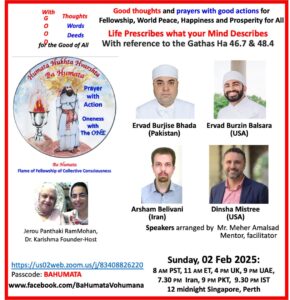

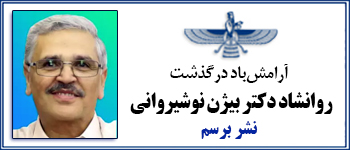



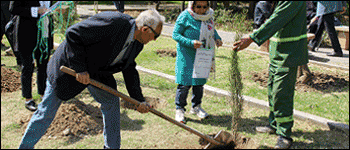






یک پاسخ
درود بر شما موبد گرامی که باعث سربلندی جامعه زرتشتی هستید